We were not going to do another blog on Aboriginal Rock Art, Culture and Society but today we went on a tour of the part of Arnhem Land closest to the Northern Territories and got much closer to an understanding (probably at a surface level), both physically and in terms of explanation.
One very unwelcome aspect of this part of the Northern Territories has been the attention of the Mosquitoes and Flies who seem different here to the rest of Australia. Not only are they the most persistent, trying to get into your ears, up your nose and any where else, the after effects in terms of irritation is terrible. We have taken to the veil (a local custom) in order
to protect ourselves when out in the worst areas – we may look like idiots (certainly to the hardern rangers) but we are well protected from bugs and sometime the envy of the unprotected. In case the picture is hard to see, here is a close up!
Land and Landscape
Arnhem Land is a self governing area of Australia within the Northern Territories. Aboriginal communities often have been given some control over their ancestral lands, this often includes controlling who can come into the land and what they can do. The group we were with were all listed on a “pass list” issued by the local Aboriginal Affairs Office which would be
produced by the guide if anyone questioned our right to be on the land. We went into Arnhem Land in a 4WD coach, not a lot of luxury but with
sufficient strength to cope with the rugged roads and the river crossing. The landscape is very different to elsewhere we have been in the Northern
Territory. Above it a sweep covering the billabong where we had lunch (imagine it as a sweep of landscape) and below are three scenes
showing plains and water – typical of what is known as “stone country”.
This Pandannis Tree not only provides a source of food but it also provides a means of transporting fire embers from one place to another. A branch is broken off and the wood hollowed out of the end. Fire embers are then placed in the hole and smoulder using the wood down in the branch as fuel. The fire can be transported by a women but if the fire goes out, only a man is allowed to create a new fire.
This is a sugar ant nest, the ants themselves can be eaten individually (or have their bottoms licked and then put back in the nest) to extract the sugar. Alternatively the nest is boiled to extract the sweetness which then has many uses.
A Harlequin Beetle on a Paper Bark Tree. The bark of the tree (note it is very laminar) is used for numerous reasons, plates, parcels, roofs of buildings etc.
This is simply a photograph of a lovely bird, the Blue Winged Kookaburra,
whilst this is the way Australians prefer to see their Cane Toads – dead!
Society
We were taken to a spot where young men were trained how to throw spears. The objective is to be able to throw a spear and get it into one of the cracks in the underneath of this rock overhang.
If you expand the picture below, you might be able to see some spear shafts in the vertical crack and also in the right hand crack which goes in a “2am direction”.
Throwing is a art (demonstrated) which can use a supplementary throwing stick as a lever.
Various types of spears were available for us to examine - hunting large animals, birds, training and also punishment spears, the latter still being used today.
If an Aboriginal commits a crime in Aboriginal Territory and is arrested for it, the Elders of the community have the right to go to the prosecuting magistrate and say that they wish him to be tried and punished by them using Aboriginal Law. Women are tried and punished by women, men by men. The punishment seems usually to be physical ranging from a beating on various parts of the body through to being speared through various parts of the body. If the accused does not turn up for his trial and punishment, then his father or brother (mother of sister) are tried and punished in his/her absence (and they will pass the punishment on at a later date). After receipt of the punishment, they are handed back to the official authorities and when recovered they appear again in front of the Magistrate. He considers the punishment meted out and may can that it was sufficient or add a conventional state penalty as well. Being sent to jail (three meals, medical support, TV etc) is considered a soft option by Aboriginal Elders.
Art
We went to an Aboriginal Art Centre at Oenpelli to see art being created and to buy some if we chose. The above artist is typical of those who produce pictures and painting for sale (the income going to the community). He is painting a picture of Mimi Spirits and in doing so, is considered to be keeping Aboriginal Art alive. That he is a true Australian (as well as an Aboriginal) was evident when I asked him if he would mind having his picture taken – his answer delivered in a broad Australian accent was “no worries mate!”
Obviously Fish!
These five stripes are representative of five ceremonies that men go through during their life as an Aboriginal. Our guide diplomatically said that he did not know what they individually represented.
The hunting hand signal for a Wallaby
“I was here” symbols
An Iguana and a “Magela” figure
On the left is an example of art being over painted through the years on on the right, contact art – such because the image is wearing a dress and therefore would only have been painted after contact with the Balander people - the name given to White people which is said to be derived from Hollander people who were the first white people to have contact with Aboriginals in this area.
On the left is a Maccanese sailing ship which came from Indonesia in order to trade for sea slugs. In the middle is an arm wearing a lace glove – aboriginals were very impressed by the European women they met (wearing lace gloves) who could peel off their skin and whose skin would grow back again in a few days!
This is a “boss buffalo hunter” – the boss because he has his hands in his pockets.
There is no doubt in our minds that Aboriginal Culture and Society is extremely deep and complex and sophisticated. The difficulty comes when it meets modern Australian society with its rules and expectations. As one person put it, “we do not understand them and they do not understand us”.
We certainly do not understand them.
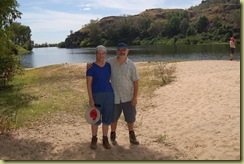
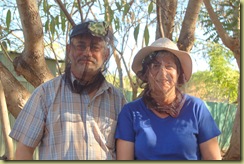
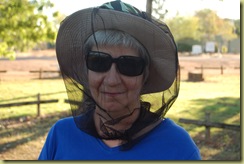
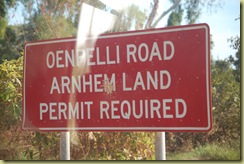
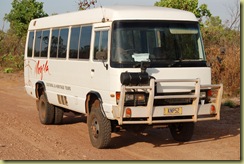


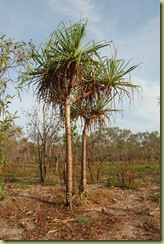
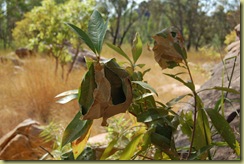

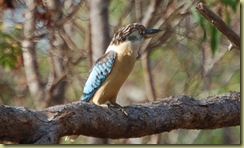
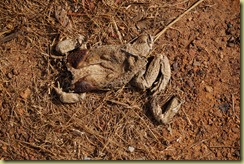
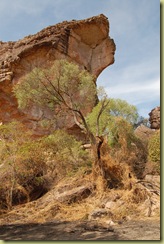
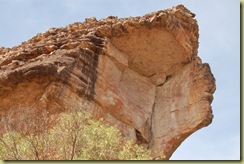
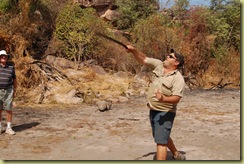

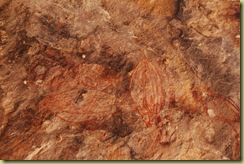
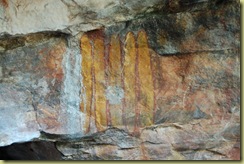
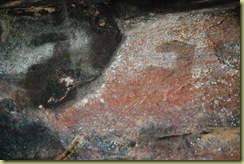
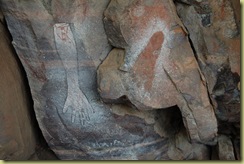
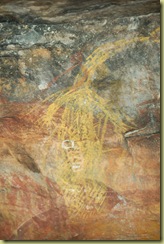
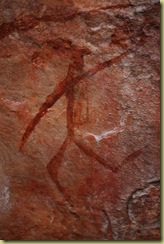
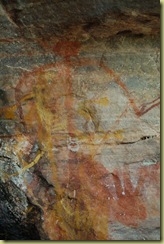
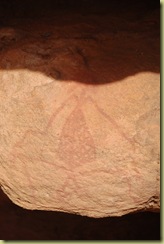
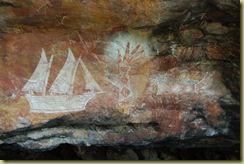
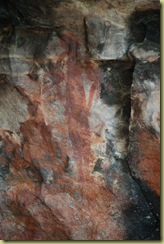
No comments:
Post a Comment